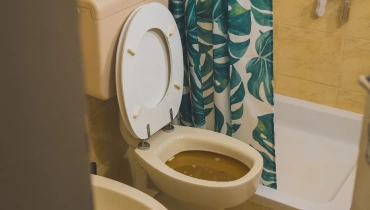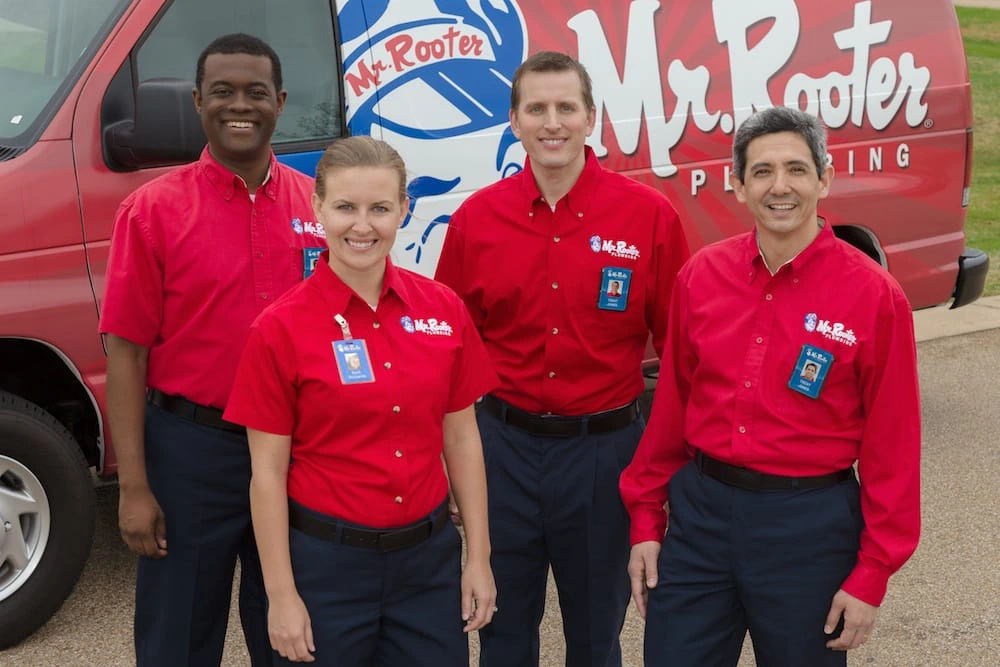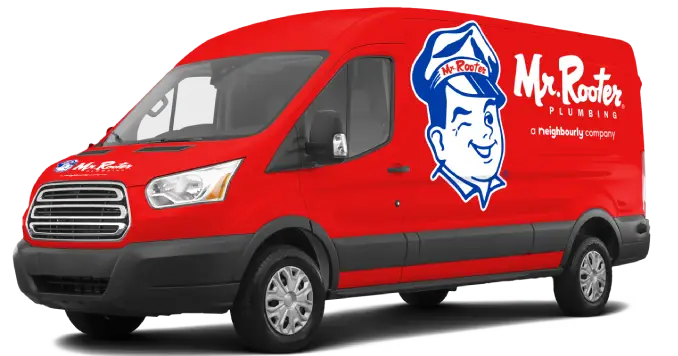
Unless you live in a brand-new development, odds are that your sewage lines are pretty old. Some communities in Toronto have municipal sewer systems that are over a century old. According to the city, these older lines, which would be in the category of combined sewers, exist in about 23 percent of current communities in Toronto. Sewer backups are more common in older sewer lines, but even a sewer line in one of the city's new communities could suffer from backflow issues.
If stormwater and sewage water are blocked from reaching their exit points, it may result in a sewer backup. Toronto homeowners understandably fear main drain blockages and there are, unfortunately, many possible causes.
Whether it's a sewer backup caused by tree roots breaking through pipes or your drains are clogged with solid material, this issue is not to be taken lightly. Raw sewage seeping up through a floor drain often leads to water damage and contamination. These issues ultimately come down to a matter of safety. All possible precautions and preventive upkeep should be completed if you want to avoid bad blockage in your sewer lateral.
Our team of Toronto plumbers can provide an emergency sewer backup service, but we’re also happy to offer professional advice and preventative solutions. This handy guide to Toronto sewer backups includes common causes, solutions for specific issues, essential preventative steps, and other useful information for Toronto property owners.
Top Causes Of A Sewer Backup In Toronto
The possibilities are about as endless as you can imagine—nature seems determined to ruin Toronto's sewage lines! Here are some of the most common causes of sewer backups in Toronto:
Shifting And Eroding Soil
If you're in an area that receives a lot of shifting or movement under the surface, damaged sewer lines are probably no stranger to you. Sewer lines can break or collapse with the fluctuating earth—and frequently do all over the world.
If there is any shift in the sand or dirt underneath pipes (such as a sinkhole) then a lack of support from beneath could cause a collapse above. Older homes with older forms of piping are especially at risk, as their pipes are more brittle.
Nearby construction is also a common culprit for buried pipe damage. Don't forget to call your utility company or a company like Ontario One Call before doing any digging in your lawn or backyard. Even if you avoid existing lines, nearby construction activity could cause a shift that leads to a collapse.
Solution: In the event there is sewer backup from shifting ground, there's little to nothing a non-professional can do. Look for local services offering excellent plumbing support with realistic solutions for your problem.
Tree Root Intrusions
If you have any large oak trees or big, hearty trees, then you've inevitably got their massive supporting root system around you. Nature isn't very kind to sewage lines, and tree roots cracking or bursting your pipes are proof of that. Even city trees could ruin your buried plumbing systems if they sit close enough to your property.
Older clay pipes are especially vulnerable. They allow tree roots to cling to their porous surface, winding around and cracking them with immense strength. Naturally growing roots are likely to hit your pipes as they seek water, and many times, they find it in your sewage lines.
During Toronto's dry season, roots are even more desperate for water. They'll search far and wide below the surface of your yard. Any drips and leaks may beckon them. The water and the nutrients from pipe runoff are like an all-you-can-eat buffet to tree roots.
It may be hard to determine if tree roots are the problem when you're standing on the surface. If there are cracks near any permanent structure or material near the lines—or you smell sewage gas—it could be tree roots. You should also look for permanent puddles or sinkholes in your lawn.
Solution: As toilet paper collects on tree roots in your pipes, a clog will begin to form and become compacted. When sewage has nowhere else to go, you’ll need to call in a Toronto sewer backup team. A professional plumbing team may first do a video camera inspection to confirm that roots are indeed the source of your problem.
As long as the pipe is still structurally sound, they may use a hydro jetting device to blast highly pressurized water through your lines. This will break up the roots and wash them into the city’s main sewer. To prevent the problem from recurring, your pipes will need to be repaired, or you may wish to remove the offending tree.
Heavy Rainfall
Rainstorms are a serious flooding threat in Toronto — especially in communities with combined public plumbing. As the public sewer systems are filled with rainfall, it becomes more difficult for sewage to flow through. The only other alternative is for that raw sewage to flow back up into the homes where it originated. That's why a backflow valve is so important for Toronto property owners.
Natural flooding is also a potential threat during storms. Water travels in direct patterns with guided roads and runoff systems, but in nature, flooding moves over tough land into softer land. This can cause a backup around drains or even under the surface where water pressure is strong.
Solution: If there is any sewage backup from heavy rainfall, call your local Toronto sewer backup team and avoid any contact with the contaminated water. Get corrective work done on your plumbing when you can and consider the help of flood prevention devices like a backflow valve, sump pump or French drain.
Internally Blocked Sewer Pipes
This is the one cause for which Toronto residents take the most responsibility. Sewer lines were designed to accept and flush only a strict set of materials. Flush something foreign down there and things will get real bad fast. You'll be able to recognize a sewer backup in blocked lines when the water from the faucet or toilet is rejected and comes gurgling back up in the form of clogged drains. . . nasty stuff!
Solution: In some cases, it's possible to plumb the gunk out yourself with plungers or plumbing snakes. For any stubborn clog, consider calling your local reliable plumber. Toronto sewer backup experts have specialized equipment and techniques for dealing with a blocked sewer drain—and the expertise to recognize serious complications.
Since we're already on the topic, this is a good time to talk about some other things you might not want to flush down the drain.
Items You Should Never Flush Down The Toilet
It looks like it fits down the drain and since it's already moving waste away, why not just flush it? Well, for starters, you could start a big, costly problem by flushing something as small as dental floss down the drain. This would require a basic drain cleaning service at best or a Toronto sewer backup remediation service at worst.
It's tempting to flush smaller products and debris, but if a clog forms from something unpleasant, you'll regret flushing that problematic material. If you're unsure about whether an item should be flushed or not, rely on the answer “no.”
Here are some other common household items that you shouldn't put down the drain:
- Tissues, paper towels, and wet wipes. Don't believe manufacturers that add a “flushable” tag to their wet wipes.
- Q-tips. Though they seem small, thin, and relatively easy to flush, these little sticks withstand the breakdown from toilet water and easily snag in the corners of the pipes of the toilet or on tree roots later on down the line.
- Cotton balls. Similar to Q-tips, cotton balls won't break down in water. Instead, they'll clump together—or with other materials—to get trapped in bends around the pipe or in roots.
- Dental floss. Floss moves like a tough rope to latch onto anything it can wind around. It's likely floss will wrap around turning parts or catch up in tree roots.
- Hair. It's best to use strainers, covers, and catchers overall bathroom drains to catch hair. You should also avoid brushing your hair in the shower.
Toronto Sewer Backup Prevention Tips
Properly Dispose Of Fat & Grease
Cooking oil, fats, and grease are all major culprits for blockage problems in drainage systems in Toronto. Sewer backups may arise when these substances are rinsed down your kitchen sink. Though some homeowners believe that a garbage disposal (also known as a garburator) may be used to dispose of congealed fat, it's best to never let these substances get anywhere near your drain.
Instead, wait for hot oil or grease to cool before disposal. Once it has solidified, use a large spoon or paper towel to wipe it into your compost bin or garbage can.
Don't Flush Most Paper Products
There is only one type of paper product that anybody in Toronto should ever flush: toilet paper. Other types of paper products are not designed to dissolve in water. Even so-called “flushable wipes” are unsafe—for both private lines and city sanitary systems. In Toronto, sewer backups are caused by flushable wipes multiple times every year.
Replace Older Pipes
Repiping is an excellent option for older homes with drainage lines that are made of cast iron, lead, or galvanized steel. A modern brass, copper, or plastic pipe will serve you much better than older drain pipes, which are more susceptible to corrosion, collapse, and the issues that lead to a bad backup.
The longer you rely on older lines, the higher the risk is for a major plumbing emergency—and the more vulnerable you are to damage caused by issues in Toronto's city sewer network. Getting your plumbing system assessed before any issues arise will help prevent the need for a Toronto sewer backup service in the future.
Install A Backwater Prevention Valve
During periods of heavy rain, rainwater may overload public sewers, sending wastewater and sewage back up into your basement floor drain and other waste outlets. Installing a backwater prevention valve will help you avoid any water moving in the wrong direction.
A backwater valve works by creating an automatic block for sewer backflows. The mechanism activates as soon as something flows in reverse, protecting your pipes from the sewer backup in Toronto's public pipes.
Install A Sump Pump
Sump pumps sit inside basement pits and stop water from rising above safe levels. Just like backwater valves, sump pumps work automatically—as long as they're maintained and repaired before any issues occur. The biggest benefit of sump pump installation is the increased protection against basement water damage—but you might also get lower homeowner's insurance rates, too.
Perform Routine Maintenance
There are various tips and tricks out there that you can follow to prevent needing a Toronto sewer backup service. One of the most well-known is to fill up your sinks and let them drain out once they're full. The combined weight of the water and the pressure may help flush out some debris clinging to the insides of your sewage lines.
Some Toronto homeowners also regularly rinse their sinks and toilets with a mixture of vinegar, baking soda and hot water. This basic solution won't clear solid objects and debris, but it could reduce soft blockage buildup in your waste lines. This reduces the chances of bad blockage leading to needing a Toronto sewer backup service.
Using professional drain cleaning services is also a great method for completely cleaning lines. Some professional plumbing equipment is even powerful enough to blast away solid blockage and cut away tree roots. Plus, the opportunity for plumbing inspections is also an easy way to identify possible causes of a future sewage issue.
Do You Need Help With A Potential Toronto Sewer Backup?

There's no ignoring the fact that a repair on your sewage line is a costly matter. You can prevent having to spend thousands of dollars fixing toilets and pipes by following some of the precautions outlined here by Mr. Rooter Plumbing of Toronto.
If you need professional service from a licensed plumber, feel free to call our team or request an appointment online. We proudly provide installation and preventative maintenance services throughout Toronto!

